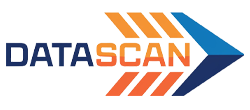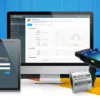
Table of Contents
ToggleIntroduction to InFlow Inventory Software
Are you struggling with spreadsheets, stockouts, or scattered warehouses? Data Scan Technologies Company works with inventory software for small business owners who want clarity and control. This all-in-one inventory control system software replaces manual work with real-time inventory updates, barcode scanning, and automated inventory control—so stock is easy to track and orders are faster to fulfill.
As a cloud-based small business inventory system, InFlow centralizes products, locations, suppliers, and orders. It’s flexible enough for wholesalers, retailers, eCommerce, and field service teams, and robust enough to support multi-location inventory tracking, sales and purchase order tracking, and rich inventory software features without complexity.
Backed by Data Scan Australian implementation and support, setup is quick, training is practical, and performance is reliable. If the goal is to adopt the best inventory management software for long-term growth, InFlow Inventory Software delivers: clearer reports, tighter cash flow, and fewer errors across every step of the process.
Setting Up Your InFlow Inventory Account
- Creating an account and logging in: Create your InFlow Inventory Software account and log in from any device. As a cloud-first inventory management software, everyone sees the same real-time inventory updates—whether in the warehouse, store, or office.
- Adding company information and logo: Enter company details, upload a logo, and set currency, units, and time zone. Quotes, invoices, and pick slips look professional and consistent from day one.
- Plans and features: Choose a plan that matches team size, locations, and integrations. Core inventory software features include product catalog, barcode scanning inventory software, purchase and sales order management, and automated inventory control. Need more? Add advanced analytics, role permissions, and integrations (order management system, accounting, shipping, and eCommerce). Data Scan helps select the right mix for your workflows and growth stage.
- Implementation support: We configure taxes, costing methods, locations, and import products/suppliers. Outcome: a ready-to-run inventory control system software aligned to your business in days—not months.
Adding Locations and Managing Inventory
- Add and name locations: Create warehouses, stores, vans, and sublocations (aisles, racks, shelves, bins). Use clear codes (WH-A3-R2-S4) to speed picking and reduce misplacements.
- Multi-location organization: Turn on multi-location inventory tracking to view on-hand, available, committed, and on-order by site. Use transfers to rebalance stock; scans update movements instantly. Keep returns and quarantine separate to protect availability accuracy.
-
Practical tips:
- Standardize location names and keep them short.
- Separate forward pick (fast movers) from bulk overstock.
- Schedule cycle counts per location (A weekly, B monthly, C quarterly).
- Set per-location reorder points and safety stock based on demand and lead times.
- Reporting: Location-driven reports highlight regional demand, dead stock pockets, and replenishment priorities—fueling inventory optimization and better purchasing decisions.
Adding Products and Inventory Items
- Create new product records: Add product name, SKU, barcode, unit of measure, default supplier, and pack sizes. Use images for quick ID. Add variants (size, color, model) under a parent to keep your catalog clean.
- Naming and coding best practices:
- Use compact, meaningful SKUs (CAB-USB-C-1M-BLK).
- Distinguish lookalikes with brand/model.
- Standardize abbreviations and casing across the team.
- Reserve SKU ranges for future categories to avoid rework.
- Details and categorization: Assign categories/subcategories, supplier costs, list prices, and tax rules. Set lead times, safety stock, and reorder points (per location) to enable automated inventory control. With barcode scanning inventory software, label printing speeds receiving, counting, and picking—reducing errors and training time.

Setting Up Taxes and Costing Methods
- Tax setup: Configure GST (and regional rules if required), mark taxable products/customers, and apply default tax codes by category. Invoices and reports reflect correct totals without manual edits.
- Costing methods: Choose a costing approach that fits operations and compliance:
- FIFO: best for fast-moving or perishable lines.
- Weighted Average: smooths cost volatility for commodity SKUs.
- Specific Identification: ideal for serialized/high-value items.
- Valuation implications: Costing affects COGS, margins, and inventory valuation. FIFO in rising-cost periods can show higher margins; Weighted Average stabilizes them. Be consistent for year-over-year comparability. If changing methods, plan a cutover, reconcile, and document with accounting. Data Scan ensures transitions don’t break reporting.
Managing Orders and Inventory Control
- Track purchase and sales orders: Create POs with lead times and promised dates; receive with barcode scans to update stock instantly. For sales, reserve stock, ship partials when needed, and manage backorders cleanly to maintain customer trust.
- Automated reorder points and alerts: Set reorder points and safety stock per SKU and per location. Inventory reorder alerts trigger timely purchases or transfers, balancing stockouts and carrying costs using demand history and supplier reliability.
- Real-time inventory updates and reporting: Dashboards and reports track sell-through, ABC classification, dead stock, supplier performance, and product margins. Integrations with eCommerce, accounting, and shipping sync orders and stock movements to reduce manual work and errors.
Tips and Best Practices for Using InFlow Inventory Software
- Streamline workflows:
- Label at receiving; scan into the final bin immediately.
- Mirror pick/pack/ship steps in document statuses.
- Schedule cycle counts (A/B/C cadence).
- Place fast movers near packing; put bulk into overstock.
- Label at receiving; scan into the final bin immediately.
- Avoid setup mistakes:
- Don’t skip bin structure—it causes shrink and delays.
- Standardize SKUs before import; cleanse spreadsheet data.
- Review reorder points quarterly; seasonality matters.
- Don’t skip bin structure—it causes shrink and delays.
- Advanced efficiency:
- Use multi-location transfers to restock stores on rules.
- Auto-allocate stock to priority orders via order management system logic.
- Tune safety stock with ABC analysis for inventory optimization.
- Create alerts for exceptions: late POs, negative bins, aging stock.
- Use multi-location transfers to restock stores on rules.
- With Data Scan technologies‘ local Australian support, teams stay fast and accurate long after go-live.
Frequently Asked Questions
What’s the best plan for small businesses?
Start with the plan that covers multi-location inventory tracking, barcode workflows, core reports, and the integrations used most. Add users/features as order volume scales. We map plan selection to SKU count, sales channels, and growth goals.
Can InFlow Inventory Software handle multiple locations?
Yes, warehouses, stores, vehicles, and granular bins are fully supported. Transfers, per-location reorder points, and location-based reporting keep replenishment tight.
How do I change costing methods?
Coordinate with accounting. Set a cutover date, reconcile stock, and document the change. We guide setup and validation to protect COGS and valuation.
Does it support real-time inventory updates?
Yes. Receipts, picks, transfers, and counts update availability instantly. Barcode scanning reduces errors and speeds operations.
Is my data secure?
InFlow uses modern cloud security practices and role-based controls. Data Scan helps configure permissions and train teams on secure workflows.
Can reordering be automated?
Absolutely. Reorder points and safety stock trigger inventory reorder alerts per SKU/location. Refine thresholds using demand history and supplier lead times.
Do you provide local implementation and support?
Yes—Data Scan Technologies delivers setup, data migration, training, and ongoing Australian support to keep your small business inventory system performing at its best.





